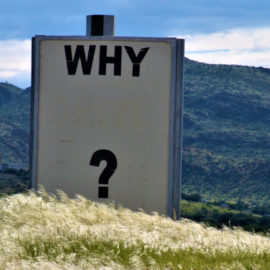

This article is an excerpt from the Shortform book guide to "A Brief History of Time" by Stephen Hawking. Shortform has the world's best summaries and analyses of books you should be reading.
Like this article? Sign up for a free trial here .
What is Hawking radiation? Can black holes emit heat?
Stephen Hawking published his theoretical prediction that radiation would be produced at the event horizon of a black hole in 1974, the same year he was elected a fellow of the Royal Society. “Hawking radiation” was named after him, since it was regarded as his theoretical discovery.
Continue reading to learn about this theory.
Hawking Radiation
What is Hawking radiation?
Nothing can escape the gravity of a black hole from inside the event horizon, but radiation that’s produced just outside the event horizon can escape—and if it originates just outside the event horizon, it would appear to be coming from the black hole itself. Hawking discusses a special type of radiation produced by quantum fluctuations near the event horizon of a black hole. This radiation is known as “Hawking radiation.”
According to Hawking, the theory of quantum mechanics predicts that “empty” space is actually full of short-lived particles, or rather pairs of particles and antiparticles. Because of the uncertainty principle, there is a finite probability that a particle-antiparticle pair can spontaneously appear in empty space, and exist for a brief instant before they come back together and annihilate each other. Hawking called these particle-antiparticle pairs “virtual particles,” and refers to the event where they are spontaneously generated as a quantum fluctuation.
Hawking points out that ordinarily, virtual particles don’t last long enough to be detected. However, if a quantum fluctuation produces a photon and an antiphoton just outside the event horizon of a black hole, and the antiphoton falls into the black hole, while the photon moves away, then the photon survives indefinitely because the antiphoton can’t come back out of the black hole to annihilate it. Thus, Hawking predicts that quantum fluctuations just outside the event horizon will result in a net flow of antiphotons into a black hole and photons (particles of light) away from the black hole—meaning the black hole will have a faint glow.
| Alternate Descriptions of Hawking Radiation Particle-antiparticle pairs are only one way of visualizing quantum fluctuations. Another way is to think about them as fluctuations in the energy-density of empty space, which cannot be deterministically zero because of the uncertainty principle. In his original scientific paper on Hawking radiation, Hawking used the energy-density approach to calculate the radiation that is produced near a black hole. However, he chose to use the particle-antiparticle description in A Brief History of Time, perhaps because it’s less mathematical and particles are easier to visualize than energy fields. Nevertheless, some authors have criticized him for this, arguing that his original energy field description provides additional insight. For one thing, the quantum energy fields allow you to calculate the actual radiation produced, while the particle-antiparticle explanation doesn’t. The energy field description also lets you calculate the distribution of the radiation, revealing that it’s produced in a region about fifteen times the size of the event horizon, with the intensity of the radiation highest near the event horizon, and tapering off as you get further away. Meanwhile, the particle-antiparticle description merely implies that Hawking radiation has to be produced near enough to the event horizon for the antiparticle to get trapped by the event horizon, without giving you a sense of how close it has to be for that to happen. |
| The Search for Hawking Radiation To date, Hawking radiation remains largely theoretical, because it is too faint for astronomers to detect by pointing a telescope at a black hole. However, scientists have observed something analogous to Hawking radiation by simulating an event horizon in the laboratory. Creating an actual gravitational event horizon in the laboratory is not possible at this point, but researchers were able to create a similar effect on a small scale using a block of glass and a high-powered infrared laser. As we discussed earlier, light slows down when passing through materials such as glass. Moreover, sufficiently intense light of the right frequency can actually cause the properties of the glass to change, such that the speed of light in the glass is reduced even more. Thus, by firing a very short pulse of light at a block of glass, scientists can create a moving “speed bump” that photons are unable to get past. Since it brings photons to a standstill, relative to itself, this “speed bump” acts a lot like an event horizon. Scientists observed photons emitted from the front of this artificial event horizon that matched Hawking’s predictions for radiation from a real event horizon. |

———End of Preview———
Like what you just read? Read the rest of the world's best book summary and analysis of Stephen Hawking's "A Brief History of Time" at Shortform .
Here's what you'll find in our full A Brief History of Time summary :
- The search for a theory that explains the history and evolution of our universe
- Stephen Hawking's discussions about time, space, dimensions, and quantum theory
- How time travel would theoretically work






